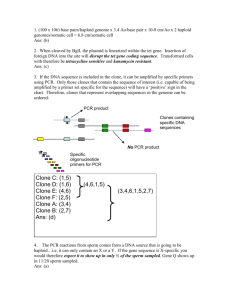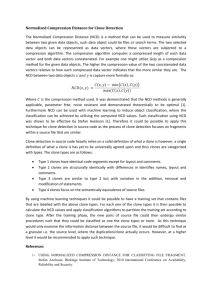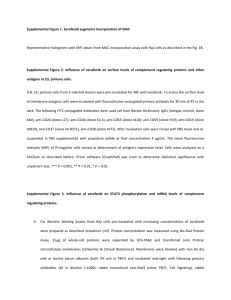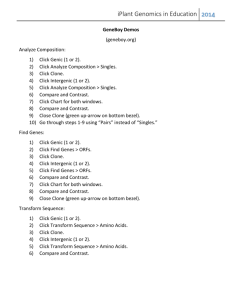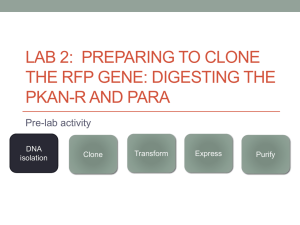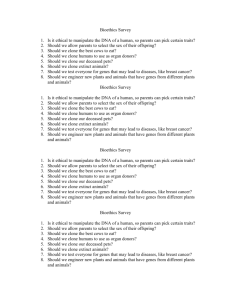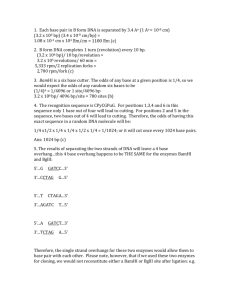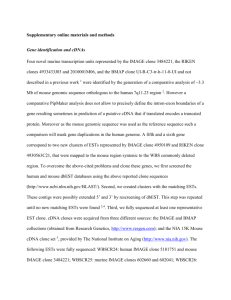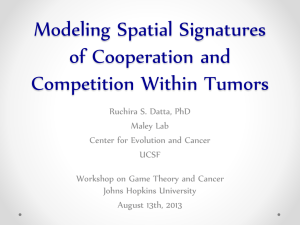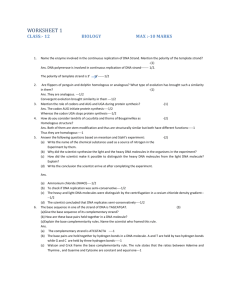kb downstream
advertisement
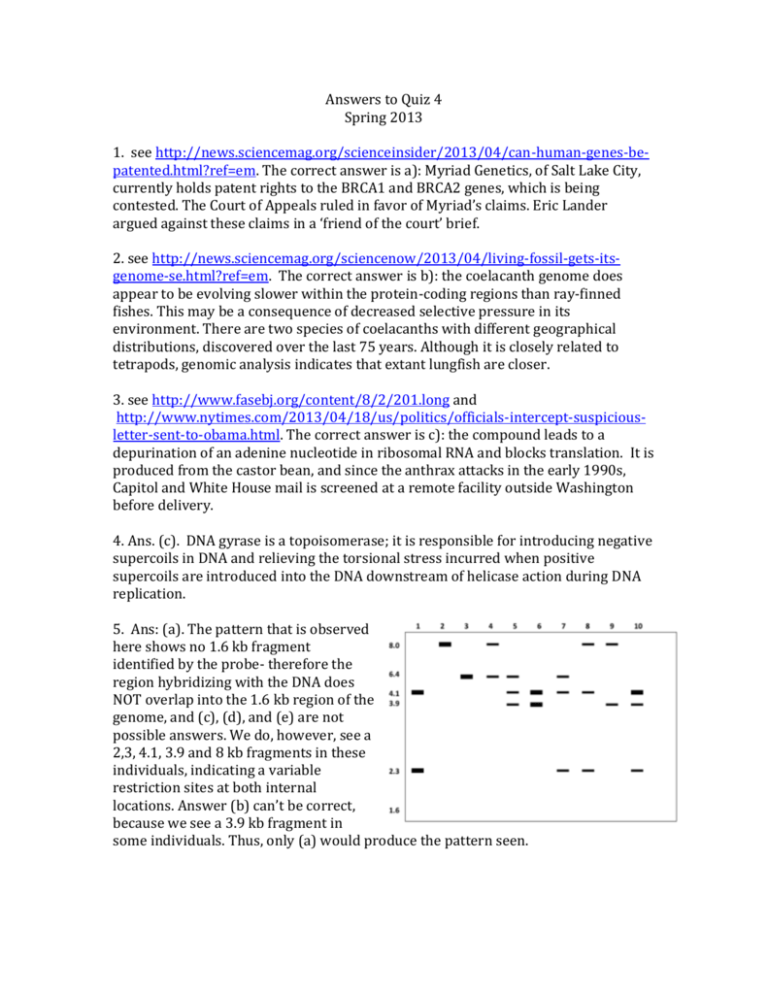
Answers to Quiz 4 Spring 2013 1. see http://news.sciencemag.org/scienceinsider/2013/04/can-human-genes-bepatented.html?ref=em. The correct answer is a): Myriad Genetics, of Salt Lake City, currently holds patent rights to the BRCA1 and BRCA2 genes, which is being contested. The Court of Appeals ruled in favor of Myriad’s claims. Eric Lander argued against these claims in a ‘friend of the court’ brief. 2. see http://news.sciencemag.org/sciencenow/2013/04/living-fossil-gets-itsgenome-se.html?ref=em. The correct answer is b): the coelacanth genome does appear to be evolving slower within the protein-coding regions than ray-finned fishes. This may be a consequence of decreased selective pressure in its environment. There are two species of coelacanths with different geographical distributions, discovered over the last 75 years. Although it is closely related to tetrapods, genomic analysis indicates that extant lungfish are closer. 3. see http://www.fasebj.org/content/8/2/201.long and http://www.nytimes.com/2013/04/18/us/politics/officials-intercept-suspiciousletter-sent-to-obama.html. The correct answer is c): the compound leads to a depurination of an adenine nucleotide in ribosomal RNA and blocks translation. It is produced from the castor bean, and since the anthrax attacks in the early 1990s, Capitol and White House mail is screened at a remote facility outside Washington before delivery. 4. Ans. (c). DNA gyrase is a topoisomerase; it is responsible for introducing negative supercoils in DNA and relieving the torsional stress incurred when positive supercoils are introduced into the DNA downstream of helicase action during DNA replication. 5. Ans: (a). The pattern that is observed here shows no 1.6 kb fragment identified by the probe- therefore the region hybridizing with the DNA does NOT overlap into the 1.6 kb region of the genome, and (c), (d), and (e) are not possible answers. We do, however, see a 2,3, 4.1, 3.9 and 8 kb fragments in these individuals, indicating a variable restriction sites at both internal locations. Answer (b) can’t be correct, because we see a 3.9 kb fragment in some individuals. Thus, only (a) would produce the pattern seen. 6. Ans: (e). None of the above; these individuals are homozygous- both maternal and paternally derived chromosomes contain the same restriction sites for this enzyme in for this region- it is the same RFLP pattern for both. 7. If the DNA sequence is included in the clone, it can be amplified by specific primers using PCR. Only those clones that contain the sequence of interest (i.e. capable of being amplified by a primer set specific for the sequence) will have a ‘positive’ sign in the chart. Therefore, clones that represent overlapping sequences in the genome can be ordered… STS marker BAC Clone 1 2 3 4 5 6 7 A - - - + - + - Clone A: contains 4,6 B - + - - + - - Clone B: contains 2,5 C + - - + - - - Clone C: contains 1,4 D - + - - + + - Clone D: contains 2,5,6 E - + - + - + - Clone E: contains 2,4,6 F - + + - + - - Clone F: contains 2,3,5 G - - + - + - + Clone G: contains 3,5,7 Clones A and C: indicates: (146) order Above with clone E indicates: (1462) order Above with clone D indicates: (14625) order Above with clone F indicates: (146253) order Above with clone G indicates: (1462537) order. Ans:(a). 8. The strand being synthesized from the primer site is: 5’-AGACTATCTCTA-3’ The template strand would run antiparallel and is: 5’-AGACTATCTCTA-3’ 3’-TCTGATAGAGAT-5’ Ans: (c) 5’-TAGAGATAGTCT-3’ 9. Ans: (e). All of the normal deoxynucleotide triphosphates would be necessary to elongate the newly synthesized DNA strand; in the ‘A’ reaction, dideoxy-ATP would also be present as a chain terminator to accumulate fragments when T is being read off of the template strand. 10. A precursors added to minimal medium B C D E F Z 1 + + + - - - + 2 + + + + - - + 3 + + + + + - + 4 - - + - - - + 5 - - - - - - + 6 - + + - - - + mutant number The compound that supports the growth of the greatest number of mutants occurs latest in the pathway, therefore FEDABCZ A mutant that blocks the F to E conversion should survive on all nutrients downstream of F; following this logic: FEDABCZ 3 2 1 6 4 5 Ans: (d): the enzyme that catalyzes the production of compound C is mutant in strain 4.
